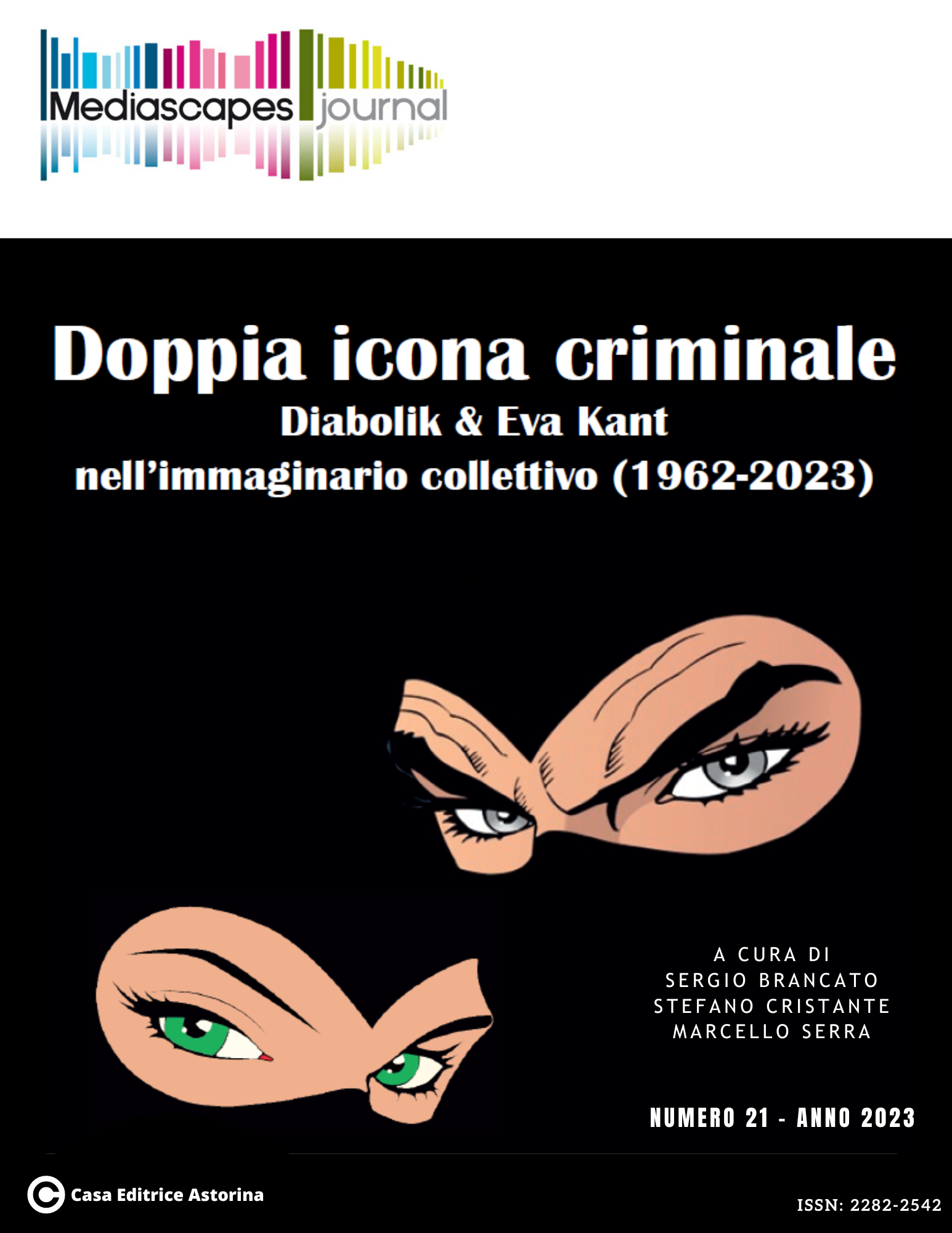La oscuridad y el mal
Iconografías de la negatividad en Diabolik
Keywords:
fumetti, Diabolik, iconografiaAbstract
This article constitutes an iconographic approximation to the gestures of the main character of Diabolik, understood as the embodiment of new aesthetics based on the idea of negativity in Italian comics. On the one hand, the protagonist appears as a synthesis of a tradition of avengers and sophisticated criminals rooted in feuilleton literature and movie serials, with Fantômas and Irma Vep, the protagonist of Les Vampires. On the other hand, Diabolik entails the creation of a new and well-differentiated figure concerning the masked avengers from the first decades of the 20th century, such as The Phantom. Based on an iconological methodology (Aby Warburg, Georges Didi-Huberman), and figural study of visual motifs (Nicole Brenez), we approach the visual iconography of Diabolik’s dark silhouette to reveal his singularity within the historical inscription of Giussani’s sister's criminal comic book series. Diabolik is ultimately revealed as a counterfigure to the Italian economic miracle, an antecedent of a contemporary vision of surveillance and attention economy capitalism, and a visual embodiment of negativity or apophatic aesthetics.
Downloads
Published
How to Cite
Issue
Section
License

This work is licensed under a Creative Commons Attribution 4.0 International License.
Mediascapes Journal is published under a Creative Commons Attribution Licence 4.0.
With the licence CC-BY, authors retain the copyright, allowing anyone to download, reuse, re-print, modify, distribute and/or copy their contribution. The work must be properly attributed to its author. It should be also mentioned that the work has been first published by the journal Anuac.
Having published these contributions for the first time, Mediascapes Journal will have the right to publish them integrally or partially as reprints or possibly as part of a thematic issue, in both digital and printed format.
It is not necessary to ask further permissions both to author or the journal.


